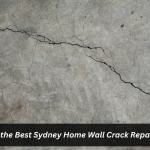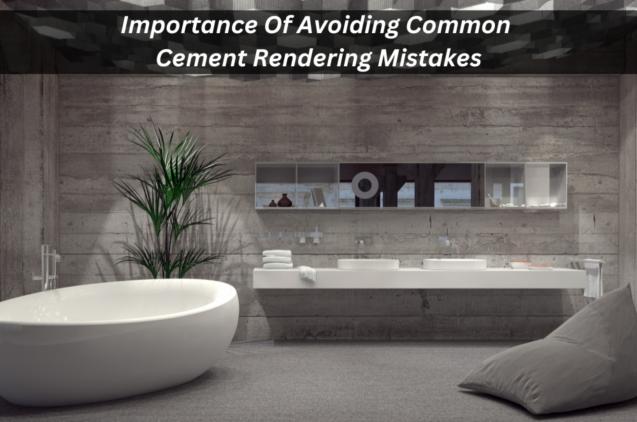
Selecting the Best Sydney Home Wall Crack Repair Method
By Jim's Rendering Sydney|November 24, 2023
If you're a Sydney homeowner staring at unsightly cracks in your walls, you're not alone. Wall cracks are a common occurrence in Sydney homes due to the city's unique soil conditions and climate. While some cracks may appear harmless, others can be indicative of more serious underlying issues. That's why it's crucial to identify the type and cause of it before selecting the appropriate wall crack repairs.
In this comprehensive guide, we'll delve into the world of wall cracks, exploring their different types, assessing their severity, evaluating their causes, and examining the most effective repair methods. By the end, you'll be equipped with the knowledge to make an informed decision about protecting your Sydney home from further damage.
Understanding the different types of wall cracks
Assessing the severity of the crack: A closer look
Evaluating the cause of the crack: Cracking the code
To ensure you're taking the right steps to fix wall cracks and avoid costly mistakes, it's essential to understand the different types of cracks, assess their severity, and pinpoint their causes.
This exploration delves into various repair methods tailored to address specific crack issues, offering insights into practical solutions for homeowners.
Consulting with a qualified professional: Seeking expert guidance
Navigating the world of wall crack repair can be daunting, so consulting with a qualified professional is highly recommended. Experienced contractors can assess the type and severity of the crack, identify the underlying cause, and recommend the most appropriate repair method based on your specific situation.
Conclusion: Protecting your Sydney home for years to come
Wall cracks, while a common sight in Sydney homes, can pose serious risks if left unattended. By understanding the different types of cracks, assessing their severity, evaluating their causes, and exploring various repair methods, you can make informed decisions about protecting your Sydney home.
Consulting with a qualified professional for expert assessment and recommendations is essential for ensuring that your wall cracks are repaired effectively and your home's structural integrity is preserved. Timely intervention will not only enhance the appearance of your walls but also safeguard the safety and comfort of your home for years to come.
In this comprehensive guide, we'll delve into the world of wall cracks, exploring their different types, assessing their severity, evaluating their causes, and examining the most effective repair methods. By the end, you'll be equipped with the knowledge to make an informed decision about protecting your Sydney home from further damage.
Understanding the different types of wall cracks
- Structural cracks: A foundation for concern
- Non-structural cracks: Less severe but still attention-worthy
Assessing the severity of the crack: A closer look
- Width matters: Hairline cracks vs. wider cracks
- Location matters: Cracks near doors and windows
- Movement matters: Expanding cracks vs. stationary cracks
Evaluating the cause of the crack: Cracking the code
To ensure you're taking the right steps to fix wall cracks and avoid costly mistakes, it's essential to understand the different types of cracks, assess their severity, and pinpoint their causes.
- Settlement: Settlement, the sinking or shifting of the foundation, is a common cause of wall cracks in Sydney. This occurs due to changes in soil moisture content, poor soil compaction, or the weight of the building itself.
- Moisture damage: Moisture damage, often resulting from leaks, plumbing issues, or poor drainage, can also lead to wall cracks. Excess moisture can cause the building materials to swell and contract, resulting in the formation of cracks.
- Foundation problems: Foundation problems, such as inadequate support or structural defects, can also manifest as wall cracks. These issues may arise from faulty construction practices, overloading the foundation, or damage caused by natural disasters like earthquakes.
- Impact damage: Impact damage, caused by accidents or natural disasters, can also result in wall cracks. Collisions, falling objects, or extreme weather events can create cracks that may need repair.
This exploration delves into various repair methods tailored to address specific crack issues, offering insights into practical solutions for homeowners.
- Crack Stitching: It is a cost-effective and minimally invasive method for repairing hairline cracks in brick walls. It involves injecting a high-strength epoxy into the crack and then reinforcing it with stainless steel bars.
- Crack Injection: It is a versatile method suitable for repairing both hairline cracks and larger cracks. It involves injecting a sealant or epoxy into the crack to fill it and prevent further damage.
- Underpinning: It is a more substantial repair method used for cracks caused by foundation movement. It involves excavating under the foundation and adding new support piers or beams to stabilize the structure.
- Helifix crack repair system: It is a patented crack stitching method that utilizes helical bars to reinforce the crack. This system is considered to be stronger and more durable than traditional crack stitching methods.
- Carbon fibre crack repair: Carbon fibre crack repair is a relatively new and effective method for repairing cracks in various wall materials, including brick, concrete, and plaster. It involves bonding carbon fibre strips to the wall over the crack, providing exceptional strength and durability.
- Balancing budget and effectiveness
- Blending repair into the wall's appearance
- Minimizing impact on household activities
Consulting with a qualified professional: Seeking expert guidance
Navigating the world of wall crack repair can be daunting, so consulting with a qualified professional is highly recommended. Experienced contractors can assess the type and severity of the crack, identify the underlying cause, and recommend the most appropriate repair method based on your specific situation.
- The importance of expert assessment and diagnosis
- Professional recommendations based on specific circumstances
- Peace of mind with a guaranteed repair solution
Conclusion: Protecting your Sydney home for years to come
Wall cracks, while a common sight in Sydney homes, can pose serious risks if left unattended. By understanding the different types of cracks, assessing their severity, evaluating their causes, and exploring various repair methods, you can make informed decisions about protecting your Sydney home.
Consulting with a qualified professional for expert assessment and recommendations is essential for ensuring that your wall cracks are repaired effectively and your home's structural integrity is preserved. Timely intervention will not only enhance the appearance of your walls but also safeguard the safety and comfort of your home for years to come.



